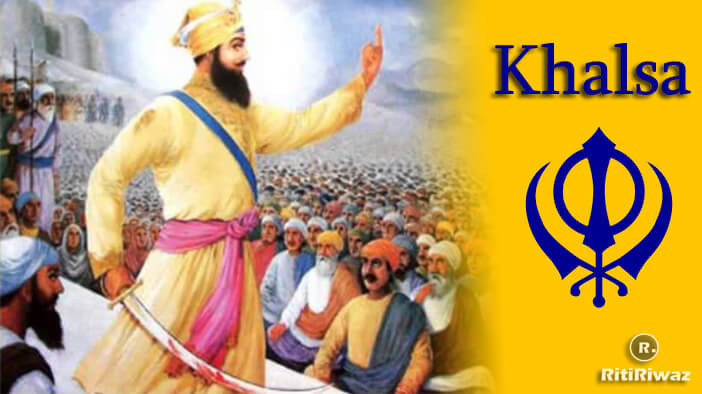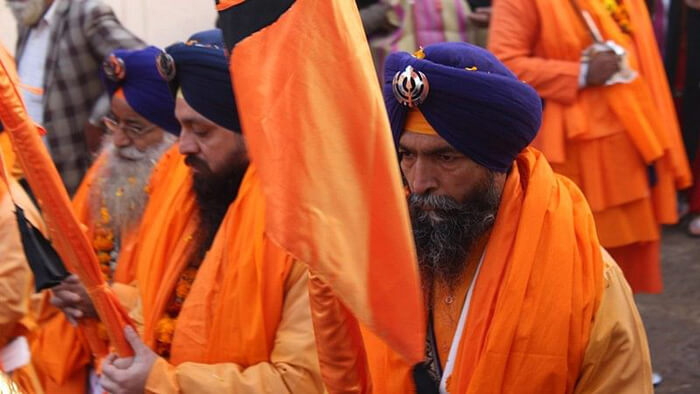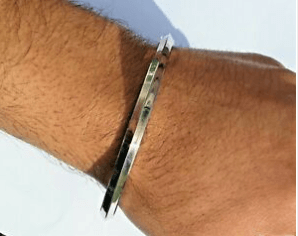The Making of the Khalsa

Khalsa means ‘pure’ ‘free from’ and they are those Sikhs who have undergone the sacred Amrit Ceremony initiated by Guru Gobind Singh. The tenth and final human Guru, Guru Gobind, set up the Khalsa, which cemented a militaristic tradition within Sikhism. Khalsa was formed partially in response to the threat posed to Sikhism’s survival by the rulers of India, the Mughals.
The Khalsa gave Sikhs an internal identity, but also an external identity which required Sikhs to be initiated and adopt the 5Ks. As well as establishing identity, Guru Gobind Singh ended the line of human Guruship and passed the Guruship to the Guru Granth Sahib, which is the Eternal Living Guru for the Sikhs today. The Guru Granth Sahib is invested with ultimate authority, spiritual and doctrinal, because the word of the Gurus is considered the word of God, and therefore carries complete authority for Sikhs.
The first baptism of the Khalsa, a ceremony called Amrit Sanchar, took place in 1699 during Vaisakhi under the guidance of Guru Gobind Singh, the 10th Sikh guru. According to the story, Guru Gobind Singh on the day of Vaisakhi drew his sword and asked for volunteers from those gathered to come forward and sacrifice his head. He said, “Let me see, let me test, let me understand whether in the time to come they will stand and offer. Will they understand God and the love of God? Do they belong to God? Do they know they have come to go? Or shall they be worms of the earth?”
Guru Gobind Singh baptized 5 Sikhs and then in turn asking the five Khalsa’s to baptize him. He called them the Panj Pyare and the first Khalsa in the Sikh tradition.
“He who keeps alight the unquenchable torch of truth, and never swerves from the thought of One God. He who has full love and confidence in God and does not put his faith, even by mistake, in fasting or the graves of Muslim saints, Hindu crematoriums, or Jogis places of sepulchre. He who recognizes the One God and no pilgrimages, alms-giving, non-destruction of life, penances, or austerities; and in whose heart the light of the Perfect One shines, – he is to be recognized as a pure member of the Khalsa” (Guru Gobind Singh, 33 Swaiyyas)
Guru Gobind Singh then mixed water and sugar into an iron bowl, stirring it with a double-edged sword to prepare what he called Amrit (“nectar”). He then administered this to the Panj Pyare, accompanied with recitations from the Adi Granth, thus founding the khanda ka paul (baptism ceremony) of a Khalsa – a warrior community.
The Khalsa baptism ceremony involves the drinking of Amrit (sugar water stirred with a dagger) in the presence of 5 Khalsa Sikhs as well as the Guru Granth Sahib. The person who is being baptized then takes the vows of the Khalsa and drinks five palmfuls of Amrit. He is given the name ‘Singh’ (meaning Lion), and she is given ‘Kaur’ (meaning Princess) after their name and they then wear the 5 K’s of the Khalsa.
Sikh baptized into the Khalsa vows to wear the Five ‘K’s’. They are:

Kesh – Uncut hair and beard, as given by God, and a turban the crown of spirituality.

Kangha – a wooden comb to comb the hair as a symbol of cleanliness.

Kirpan – (A ceremonial dagger) A sword, with which the person is committed to defending the truth.

Kachha – A cotton underwear as a reminder of the commitment to purity.

Kara – A steel ring worn on the wrist signifying bondage to truth and freedom from every other entanglement.
The Five Ks are not just symbols, but articles of faith that collectively form the external identity and the Khalsa devotee’s commitment to the Sikh rehni, “Sikh way of life”. The Khalsa also take vows to refrain from sexual relationships outside of marriage, Not to eat meat like Muslims, Tobacco, or drink alcohol and other intoxicants. The Khalsa’s also agreed to never interact with those who followed rivals or their successors. Guru Gobind Singh also gave the Khalsa 52 hukams or 52 specific additional guidelines while living in Nanded in 1708.
The Khalsa warrior community that was initiated by Guru Gobind Singh is still followed by the modern Sikh community and those traditions have still survived. Those Sikhs who are baptized are called Khalsa Sikhs while a Sikh who has not taken Amrit but follows the teachings of the Sri Guru Granth Sahib is called Sahajdhari Sikhs.






